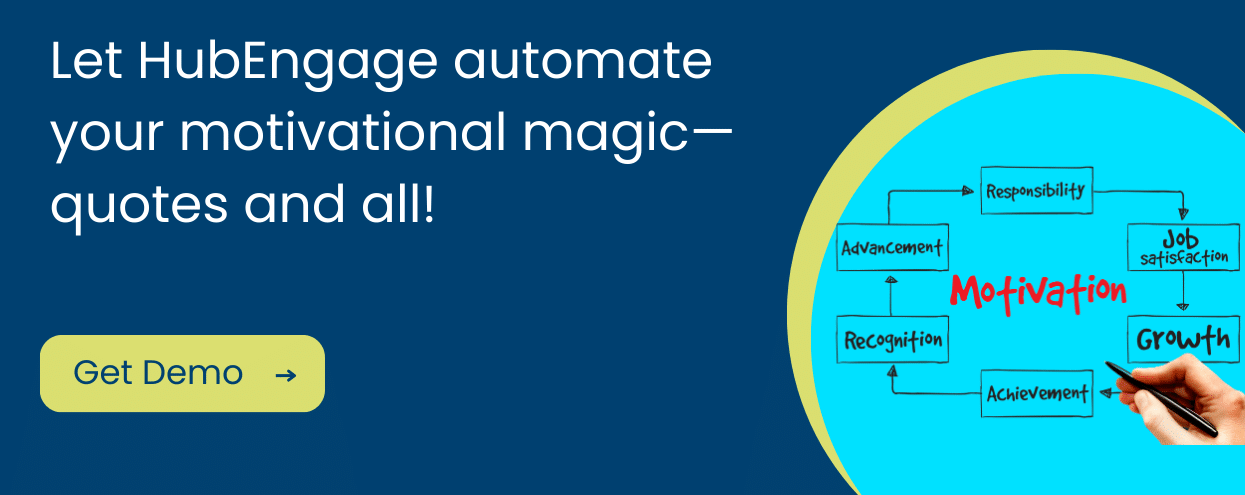As an entrepreneur, business owner, or HR manager, you know that a motivated workforce is key to success. But how do you keep your employees driven, focused, and productive day in and day out? Fortunately, there are proven strategies that can help enhance motivation and keep your team engaged. In this article, we’ll explore five of the most effective methods for boosting employee motivation management in the workplace.
Understanding Employee Motivation Management
Before we delve into specific strategies, it’s important to understand what drives employee motivation. According to research, employee motivation strategies are largely influenced by three factors:
- Intrinsic rewards (such as a sense of fulfillment or accomplishment),
- Extrinsic rewards (such as salary, bonuses, or other benefits),
- And a feeling of belonging and connectedness to the company and its mission.
One of the most important aspects of intrinsic rewards is the sense of accomplishment that comes with completing a task or project. When employees feel their work is meaningful, it has a positive impact on the company. They are more likely to be motivated to continue working hard and producing high-quality work.
Similarly, extrinsic rewards such as salary and bonuses can be powerful motivators for employees. However, these rewards are most effective when they are tied to specific goals or performance metrics. When employees understand exactly how they can earn a bonus, they are motivated to work towards those goals.

The Importance of Employee Motivation Management
The benefits of a motivated workforce are higher productivity, increased job satisfaction, lower turnover rates, and a better bottom line for your business. Motivated employees also provide excellent customer service and take the initiative to solve problems or innovate new solutions.
Studies have shown that companies with highly motivated employees are more likely to achieve their goals and outperform their competitors. This is because motivated employees are more engaged and committed. This leads to higher productivity and better overall performance.
Factors Influencing Employee Motivation
Several key factors that affect employee motivation, including:
- The quality of leadership and management: Employees are more likely to be motivated when they feel that their managers are supportive, communicative, and able to provide clear direction and feedback.
- The company culture and work environment: A supportive work environment fosters a sense of belonging and connectedness among employees. This can in turn boost motivation and productivity.
- The level of compensation and benefits: While compensation is not the only factor that motivates employees, it is an important one. Employees who feel that they are being fairly compensated for their work are more likely to be motivated and engaged.
- The opportunities for career growth and advancement: Employees who get opportunities to learn and grow in their roles are more likely to be motivated to work hard and achieve their goals.
Understanding employee motivation and fostering a positive work environment creates a culture of engagement and success for companies.
Employee Motivation Strategy #1: Setting Clear Goals and Expectations
The first step in enhancing employee motivation is to ensure that everyone on your team has a clear understanding of what is expected of them. By setting specific, measurable goals for each employee, you give them a sense of purpose and direction in their work. This can help them stay focused and motivated, as they have a clear target to work towards.
The Benefits of Goal Setting
Goal setting has a significant impact as an employee motivation strategy. When employees have clear goals, they are more likely to feel invested in their work and have a sense of accomplishment when they achieve those goals. This can lead to increased job satisfaction and higher levels of productivity.
For instance, imagine a team of sales representatives who are given a goal to increase their sales by 10% in the next quarter. With this clear goal in mind, they are more likely to put in extra effort and come up with innovative ideas to achieve this target. When they do meet or exceed this goal, they will feel a sense of pride and accomplishment, which can further motivate them to perform well.
Moreover, setting clear goals can also help employees prioritize their tasks and manage their time effectively. When they know what is expected of them, they can focus on the most important tasks and avoid wasting time on less critical activities.
How to Set Effective Goals
When setting goals for employees, it’s important to make them specific, measurable, achievable, relevant, and time-bound (SMART). This means that each goal should be well-defined, quantifiable, realistically attainable, aligned with the company’s larger objectives, and have a clear timeline for completion.
For example, if you are setting a goal for a customer service representative, you could make it SMART by saying, “Increase customer satisfaction ratings by 15% in the next six months by resolving customer complaints within 24 hours and implementing a new customer feedback survey.” This goal is specific, measurable, achievable, relevant, and time-bound, which makes it easier for the employee to understand and work towards.
Overall, setting clear goals and expectations is a crucial strategy for enhancing employee motivation. By giving employees a sense of purpose and direction in their work, you can help them stay focused, productive, and engaged. Moreover, setting SMART goals can lead to increased job satisfaction, higher levels of productivity, and better overall performance.
Employee Motivation Strategy #2: Offering Competitive Compensation and Benefits
Money isn’t everything, but it certainly plays a role in employee motivation. Competitive compensation and benefits packages can help attract and retain top talent, and can also serve as a powerful motivator for employees who feel valued and rewarded for their hard work.
The Role of Compensation in Motivation Management
Research shows that compensation is a key factor in employee motivation. When employees feel that they are being compensated fairly for their work, they are more likely to have a positive outlook on their job and be highly motivated to succeed. On the other hand, when compensation is perceived to be unfair or inadequate, employees may feel discouraged or disengaged from their work.
It’s important to note that compensation doesn’t just refer to salary. It can also include bonuses, stock options, and other financial incentives. These types of rewards are particularly effective for motivating employees who are driven by financial gain.
Types of Benefits to Consider
In addition to salary, there are many other benefits that can help motivate employees. These can include health insurance, retirement plans, paid time off, performance bonuses, and employee discounts.
Health insurance is particularly important for employees, as it provides them with access to medical care when they need it. By offering a comprehensive health insurance plan, you can help ensure that your employees are healthy and productive.
Retirement plans are also an important benefit to consider. Many employees are concerned about their financial future and want to ensure that they are saving enough for retirement. You can help alleviate this concern and show your employees that you are invested in their long-term well-being by offering a retirement plan.
Paid time off is another important benefit to consider. Employees need time to rest and recharge, and offering paid time off can help them do just that. This can include vacation time, sick leave, and personal days.
Performance bonuses are a great way to reward employees for their hard work and motivate them to continue performing at a high level. By tying bonuses to performance metrics, you can help your employees be focused on achieving their goals.
Finally, employee discounts can be a fun and unique benefit to offer. By partnering with local businesses, you can provide your employees with discounts on products and services that they use every day.
Overall, offering a comprehensive compensation and benefits package is a key strategy for attracting and retaining top talent. By investing in your employees, you can motivate and engage them while demonstrating your commitment to the organization’s overall success.
Employee Motivation Strategy #3: Providing Opportunities for Growth and Development
One of the best ways to keep employees motivated is to offer opportunities for growth and development. When you engage your employees and make them feel that they are continually learning and developing new skills, they are more likely to connect emotionally with your brand.
The Impact of Professional Development on Motivation Management
Studies show that employees who have access to professional development opportunities are more likely to feel valued and motivated in their jobs. By providing training sessions, educational programs, mentorship opportunities, or other development initiatives, you can help your employees build their skills and improve their performance.
Implementing Training and Development Programs
To implement effective training and development programs, it’s important to understand the specific needs and preferences of your employees. This can involve conducting surveys, assessing performance metrics, or holding one-on-one meetings to discuss career aspirations and goals. By tailoring your professional development initiatives to the unique needs of each employee, you can help them feel invested in their own growth and development.
Employee Motivation Strategy #4: Encouraging Work-Life Balance
In today’s fast-paced, always-on world, work-life balance is more important than ever. When employees feel that they have enough time and energy to devote to their personal lives, they are more likely to feel fulfilled and motivated in their jobs.
The Connection Between Work-Life Balance and Motivation Tools
Research shows that employees who have a good balance between their work and personal lives are more productive, engaged, and satisfied in their jobs. By promoting work-life balance, you can help reduce stress, prevent burnout, and improve the overall well-being of your employees.
Tips for Promoting Work-Life Balance
There are many strategies you can use to promote work-life balance for your employees, including:
- Encouraging flexible work arrangements, such as telecommuting or flex time
- Offering paid time off for vacations, sick days, or personal reasons
- Providing resources for stress management, such as meditation or counseling services
- Creating a culture of work-life balance by modeling healthy habits and encouraging self-care
Employee Motivation Strategy #5: Recognizing and Rewarding Achievements
Finally, one of the most powerful ways to motivate employees is to recognize and reward their achievements. When you appreciate your employees’ hard work and accomplishments, they are more likely to feel motivated in their work.
The Benefits of Recognition and Rewards
Research shows that recognition and rewards can have a significant impact on employee motivation. When you recognize employees’ dedication and daily contributions, they get a sense of purpose and pride in their work. This, in turn, can lead to higher levels of productivity, engagement, and job satisfaction.
Implementing Recognition and Rewards Programs
To implement effective recognition programs, it’s important to make them meaningful and relevant to the preferences of your employees. This can involve offering performance-based bonuses, public recognition events, or non-monetary rewards such as extra time off or company merchandise. By tailoring recognitions to the company values, you can make your employees feel valued and motivated in their work.
Conclusion: Implementing employee motivation strategies is critical for organizations of all sizes
Implement these five proven strategies and enhance your employee motivation. In doing so, you can create a workplace culture that fosters engagement, dedication, and productivity. From setting clear goals and expectations to offering competitive compensation and benefits, apply motivation strategies regularly. From providing opportunities for growth and development to promoting work-life balance, keep your employees engaged and happy. And by recognizing and rewarding their achievements, you can foster loyalty and brand connect with your employees. By investing in your team, you can create a positive and productive work environment that drives success for your business.
Whether you have an employee strategy in place or need one, there is a ready-to-use solution that can drive your program with seamless automations for quick and assured results. Check out the best employee app of 2023.













